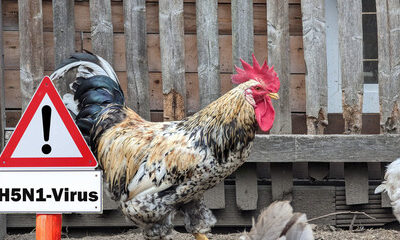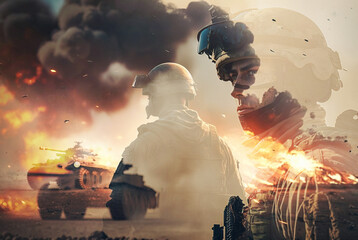Various thoughts on firearms for a SHTF scenario and/or home defense:
First of all, please be sure to check the pertinent laws in your state, as firearm restrictions do vary. For example, a particular configuration of a firearm that is legal in Arizona may be illegal in California (or Kalifornia, as some refer to it). Keep that in mind when reading the comments below. Such laws are particularly relevant with respect to rifles!
Also, for those new to guns, rule #1:
EVERY TIME you pick up a firearm, you are to ASSUME that IT IS loaded. CHECK THE MAGAZINE AND THE CHAMBER! DO THIS EVERY SINGLE TIME!!! I DON’T CARE IF YOUR GRANDMA JUST HANDED YOU THE GUN!!!
A few other safety rules to follow:
- never point a gun at anything you aren’t willing to destroy
- check your backdrop
- keep your finger off the trigger until you are ready to shoot
Note that the comments below are intended for people who don’t know anything about guns, and although some of the opinions may be debatable, they reflect, at the very least, what are reasonable opinions. For example, anyone who says ‘Glocks suck!’ is either joking, doesn’t know anything about guns, or is a ‘gun snob’ who drops $3000 on pistols and thinks that anything that cost less is garbage, regardless of how many cops use them.
For purposes of simplicity, let’s break this down into three categories – shotguns, pistols, and rifles.
Shotguns:
What gauge?
For those who don’t know, the ‘gauge’ refers, for all intents and purposes, to the diameter of the barrel and/or the shell.
During my concealed weapons permit course, the instructor said something to the effect of “for a home defense shotgun, you can pick any gauge you want…as long as it is 12-gauge.”
First, 12-gauge shotguns offer a generous spread (i.e., you don’t have to be that accurate) and/or stopping power, depending on the type of ammunition of course. Second, 12-gauge shells are BY FAR the most common and the easiest to find (compared to .410, 20-gauge, etc.) and often the least expensive. Wal-Mart (where I buy much of my ammo) usually carries everything in 12-gauge from very light loads for hunting birds and clay shooting to 00 buckshot and slugs.
OK, so 12-gauge it is…but what kind of shells should you use?
First of all, just stick to 2 ¾ shells (i.e., they sell shells of various lengths). 2 ¾ are the most common, and most shotguns can use them.
For a SHTF scenario, as opposed to home defense, 00 (‘double ought’) buckshot, which is essentially 7-9 pellets (for a 2 ¾ shell) similar in size to a 9 mm bullet, is probably the way to go, as it offers some spread and SERIOUS stopping power, and decent range (maybe 50 yards or so). If you want more penetration (but no spread), you may want to consider a rifled slug. One look at the single, large bullet at the end of a slug shell will convince you that IT WILL hurt the bad guy very badly, even IF it passes through him. Slugs may be useful up to 100 yards or so…though it may be hard to hit much of anything from that distance with it.
…BUT for home defense, 00 buck and slugs MAY not be the best choice. One of the concerns with firing at an intruder in your house is what happens to the bullet/pellet if you miss the bad guy, or it goes through the bad guy? Some ballistics tests have indicated that various types of buckshot can easily pass through several layers of sheetrock because of the relatively high momentum of the projectiles. Therefore, some experts recommend a lighter load if the shotgun is intended only as a “under the bed” weapon. One commonly recommended load is No. 4 birdshot, which has a higher number of smaller pellets compared to 00 buck. While still offering ‘decent’ stopping power, it will spread a bit more than buckshot and really cut down the possibility of injuring a family member in another room or a neighbor.
Another thing to keep in mind is that you can load your shotgun with alternating rounds (e.g., #4 bird, slug, 00 buck, #4 bird, etc) just be sure to have the series memorized.
OK, so which shotgun should you get?
First of all, most experts I’ve talked to HIGHLY recommend pump action shotguns over semi-automatic shotguns. They are generally considered to be more reliable. Even more importantly, during a home invasion, you have the ability to “politely” tell the bad guys to get the hell out by simple actuating the pump to generate what some consider to be the second most recognizable sound in the world – “CHCK – CHCK.” (FYI, the first most recognizable sound is supposedly a phone ringing).
The two most common shotguns sold for any self-defense purpose nowadays are probably the Mossberg 500 and the Remington 870 with 18′ barrels. They are usually about the same price ($300-$400). If you are looking to save money and see a good deal on either, go for it – but if you get a chance, check them both out.
For those looking to save some money, one other possibility is the Maverick 88. Mavericks are made by Mossberg, and the 88 is supposedly very similar to the Mossberg 500, but usually costs $50-$100 less. The most noticeable difference between the two is the location of the safety. The Mossberg has a slide-type safety on the top of the receiver, and the Maverick, like the Remington 870, has the traditional push-button safety near the trigger.
Personally, I prefer (and own) a Remington 870. It just feels the most solid to me but you really can’t go wrong with any of them.
One other thing to note about 12-gauges (and shotguns in general) – if you’ve never fired one before, they kick like hell. This is especially true when using a heavy (i.e., weight) and/or fast (i.e., amount of gun powder) load, like 00 buck or a slug. Ten shots of either, from a stock 12-gauge, will leave you sore, and probably give you a bruise.
The goods news is that a company called Blackhawk makes recoil absorbing stocks (i.e., not just a pad – these things have springs and stuff in them). I have yet to fire one, but supposedly they are amazing. If you shop around a bit (e.g., Ebay), you can probably pick one up for $100 or so. They make them in both pistol grip and traditional stock shapes. Here are two links to Blackhawk’s webpage:
http://www.blackhawk.com/product/CompStock-Shotgun-Stock,1155,165.htm
http://www.blackhawk.com/product/SpecOps-Adjustable-Shotgun-Stock,1158,165.htm
One final note on shotguns – one other way to minimize recoil, is to use “low recoil shells.” They are essentially the same as regular shotgun shells, but have a bit less gun powder behind then…which not only takes it easy on your shoulder, but minimizes the worries about overpenetration into another room or house…BUT stopping power may be reduced.
Pistols (i.e., handguns that use magazines; not revolvers):
What caliber?
OK, what I DON’T want to do is start the ‘which is the best handgun caliber’ debate. So, I’ll just limit this to perhaps the three most common nowadays (at least for pistols, as opposed to revolvers, which is another topic I want to avoid): 9 mm, .40 cal, and .45 cal.
A ‘defense’ type (e.g., hollow point) bullet (as opposed to ‘ball’ or full metal jacket) in any of these three rounds provides plenty of stopping power, unless you’ve got Michael Myers (from ‘Halloween,’ ‘So I Married and Axe Murderer’) after you.
The only other comments I’ll make about pistol caliber:
With all other things being the same “ 9 mm recoils the least, so it’s generally the easiest of the three to stay on target after pulling the trigger, and usually offers higher capacity magazines than the other two but does have the least stopping power. .40 offers (in a defensive round) more stopping power than 9 mm, but usually ‘snaps’ (or recoils) more than BOTH 9 mm AND .45. .45 offers the most stopping power but you’ll generally have to sacrifice a few rounds of magazine capacity and a bit a penetration (which might be a good thing depending on the situation). There usually isn’t THAT MUCH of a price difference between the three, though 9 mm is usually the least expensive and .45 is the most expensive. Note that as of September 2009, .40 cal ammo is probably the easiest to find.
One final comment regarding pistol caliber – overpenetration in a home defense situation, IS a concern, especially with FMJ ammo. For a ‘nightstand’ pistol, in any of these calibers, a defensive round, such as some sort of hollow point, is STRONGLY recommended, as it increases stopping power significantly and reduces the odds of injuring an innocent party.
OK, so which pistol?
In my opinion, if the pistol is really ONLY for SHTF, a zombie attack, etc., and you are not planning to become a recreational shooter, just go buy a full size Glock in your choice of caliber. Enough said. (Note the other pistols I mention below are essentially other manufacturers versions of the Glock).
However, if it’s your first pistol, and you think you MIGHT want to shoot a bit more for practice (which is a really, really good idea) and/or fun, but you still have the SHTF plan in mind, I’d still keep it simple. If you want a full size pistol (as opposed to something for carrying concealed), the first three I would look at are the Springfield XD, Glock, and Smith and Wesson M&P. All three have polymer frames w/steel slides and are double-action only (i.e., no “hammer” – they have internal firing pins, and the trigger pull is always the same). All three are ABOUT the same price (as of September 2009, the XD is the least expensive at $459 or so if you shop around…the Glock c. $500…M&P c. $550). Some people rip on polymer guns, but they are light, usually relatively inexpensive, easy to care for (all three of these can be stripped down in just a few seconds), and TOUGH (Supposedly, Glocks have been dropped several hundred feet onto concrete and are still able to fire).
My general thoughts/the consensus on these three: In the end, the Glock MAY be the most reliable, and the M&P has the best ergonomics (i.e., it “feels” best in your hand). Overall though, I prefer shooting the XD the best, especially because I think it has the smoothest trigger pull of the three. I own an XD 40 (.40 cal) with a 5″ barrel instead of the standard 4″. The extra barrel length makes the gun a bit heavier but reduces the snap a bit (which is not as much of an issue with 9 mm or .45).
That being said, all three are rock solid. You can’t go wrong with any of them.
You MIGHT be able to save a bit of money buying one of these guns used. However, I still recommend buying from a reputable gun shop, for obvious reasons. Besides, the odds of saving a substantial amount of money from buying from a private seller are actually pretty slim.
Also note that some shops (like my local shop/range) sell used, law enforcement trade-ins – often Glocks. At my local shop, these seem to be a pretty good deal, as although the outside of most of them show holster wear, a quick field strip often reveals that the gun has been fired VERY little. In fact, I’ve seen Glock trade-ins that still have some of the original copper-colored lubricant that Glock uses when assembling the pistols at their factory. My local shop sells such Glocks for $320-$350.
Safety note – like many pistols these days, none of the pistols I mentioned above have actual “safety” switches per se (at least as STANARD features). However, they do have other mechanisms to help ensure the gun fires only when intended (e.g., if the trigger is actually pulled and/or is being securely held in your palm, as opposed to the gun being dropped or something – but no actual safety levers).
That being said, I’ll mention one other full size pistol: the FN Herstal FNP. I just picked up a good deal on a nearly brand new FNP 40 (.40 cal…$450 out the door). It too is a polymer/steel, BUT it has an external hammer and offers a single action and a double action trigger pull. That is, you can either have the hammer cocked and shoot with a short, quick trigger pull OR have the hammer uncocked for a longer, slower trigger pull. Assuming a round is chambered, the double action trigger pull of the FNP is really it’s only ‘safety.’ It also has a decocker (i.e., a lever that allows you to decock the hammer without firing). If you are OK with (and/or prefer) the single/double action thing, you may want to check them out. Supposedly, quite a few of our service troops carry them now, and I MAY actually prefer it to my XD now.
One final note on pistols – if you want something a bit smaller that you MIGHT want to carry/conceal but still consider SHTF as the primary purpose for having the gun, from what I’ve seen, Glock is the best band for the buck. The Glock 19 (9 mm) and the Glock 23 (.40 cal) have frames that are one step smaller than ‘full size.’ My sister has a Glock 19, and I shoot it all the time. It’s light and small enough to conceal pretty easily, but big enough that I don’t feel uncomfortable shooting it – and I have pretty big hands. The smaller frame handles 9 mm fine, and the 19 is pretty easy to shoot. However, because of the extra ‘snap’ of .40, the Glock 23 MAY be somewhat difficult to shoot without a decent amount of practice (i.e., because of the smaller frame and shorter barrel, the extra recoil of the .40 is more noticeable). The Glock 19 and 23 usually cost the same as the full size Glocks.
Rifles:
As I’ve stated on SHTF Plan before, if we get to the point that I NEED my rifles to defend myself, we are in SERIOUS trouble (e.g., The Road Warrior). As such, for purposes of self defense, a rifle should be the ‘last’ to add to your collection, in my opinion.
There are a lot of different options when buying a rifle, but keeping this limited to “semi-auto, assault type rifles, perhaps the ‘most common’ for our purposes here, and the easiest to find, seem to be AK-47 variants, an SKS, AR-15 variants, and Ruger ‘ranch’ rifles (e.g., the Mini-14 and the Mini 30). I’m not saying these are the ‘best’,that is, I’m not trying to start the ‘which semi-auto rifle is the best’ debate.
These rifles can be chambered for various rounds, but USUALLY, AK-47s and SKSs fire 7.62 x 39 mm, as does the Mini-30. AR-15s (usually) and the Mini-14 fire .223 Remington (and/or 5.56 x 45 mm NATO). The distinction between .223 and 5.56 NATO IS important. Some rifles can fire both, some CAN NOT. Be sure to check your rifle!
7.62 is usually less expensive than .223, especially when using ‘cheap’ stuff like Wolf ammo (see below). As of September 2009, 1000 rounds of steel-cased Wolf 7.62 (hollow point, soft point, or FMJ) can be had for $250-$300. 1000 rounds of the ‘cheapest’ RECOMMENDED (see below) .223 will run more like $350-$400 but just for FMJ.
It seems to be generally accepted that AKs, and SKSs are built to ‘looser’ tolerances. Thus, they TEND to be more reliable than AR-15s in that they ‘require’ less maintenance and are less finicky about the types of ammo they fire. The Wolf ammo I mentioned above usually works just fine for AKs and SKSs. However, they also are generally considered to be less accurate than AR-15s. These days a new, decent AK variant can be picked up for around $500 if you shop around a bit. From what I understand, SKSs are no longer manufactured, but with some luck, you can still purchase an ‘unfired’ SKS for around $350 (note “ ten years ago, such an SKS costs less than $100). Standard SKSs come with a traditional stock and a 10-round ‘box’ magazine, which loaded from the top of the gun. However, after market, pistol grip type stocks are available, as are higher capacity magazines (check your state’s gun laws!). Between the two, I think it’s a coin flip but SKSs tend to be bit less expensive.
AR-15s are usually lighter (depending on the amount of ‘toys’ you have on it) and more accurate than AKs and SKSs (though only an issue, if at all, well above 100 yards, if not more). ARs DO require more maintenance (and lubrication) than AKs and SKSs, and are a bit trickier to field strip for cleaning. However, if properly maintained, modern AR-15s are considered by most experts to be very reliable. Ammunition selection is one item that can affect the reliability of an AR. The steel-cased Wolf ammo is also made in .223, but MOST enthusiasts do not recommend using it in AR-15s, as there are many reports of jamming, etc., when using Wolf. ‘Higher’ quality brass-cased ammo is usually recommended for ARs. That being said, I have heard a few accounts of people using Wolf in ARs with no problem. One AR manufacturer, Bushmaster, even claims to test fire their rifles using steel-cased Wolf.
Re using .223 FMJ, as opposed to hollow point or something, for defense opinions vary on this. All I’ll say about it is that it appears as though our troops in the Middle East ARE using a TYPE of FMJ .223 (or really the 5.56 NATO). (‘Google’ it for more info).
ARs are also essentially Lego sets. That is, there are countless accessories than can be added to customize it but that stuff adds up (i.e., $$$) quick. Speaking of which, a’decent’ new AR, as of September 2009, can be purchased for $800-$900. ‘Decent’ is a relative term of course. That being said, I’ll go ahead and recommend a couple of manufacturers: Stag Arms, Rock River Arms, Del-ton, Bushmaster, and DPMS. Those manufacturers may not be the “best,†but they are certainly not the most expensive either.
Note that most of my comments regarding AR-15s are directed at traditional ‘direct impingement’ AR-15s, not the more modern gas piston variants, such as those made by LWRC which are much more expensive and somewhat heavier (‘Google’ it for more info).
Regarding the Ruger Mini-14 (.223) and Mini-30 (7.62) these seem to be considered to fall in between AKs/SKSs and AR-15 on the reliability/ease of care vs. accuracy scale. However, I have never fired either. Based on what I know about them, they are fine rifles, but they to cost basically as much as a decent AR.
OK, so after all of that, of the rifles I discussed above, what should you get?
If it’s ONLY for SHTF (or a zombie attack!), you are unlikely to start shooting for fun, and if the S does not HTF, the gun is just going to sit in your closest, just get yourself an AK or SKS (and a case or two of Wolf ammo). In all likelihood, you will not NEED any more accuracy, and either one can essentially be ‘maintenance free’ (though it is not recommended). Because SKSs are a bit cheaper, I’d probably go that route and maybe add an aftermarket stock and a higher capacity magazine.
Well, let me rephrase the above if you are really concerned about a SHTF scenario to the extent that you want to buy a rifle, you SHOULD get an AK or a SKS, regardless of also buying an AR.
I would only add to your collection with an AR if you are willing to learn how to properly take care it. Don’t get me wrong, taking care of an AR is not all that hard, but it is a bit nerve wracking the first time around and they do require proper lubrication, which is supposedly the leading cause of failed operation.
Regarding home defense rifles are generally not preferred in a home defense situation, as they offer only the disadvantages (lack of maneuverability) of a shotgun, without any of the advantages (spread), while obviously being less maneuverable than a pistol.
It should be noted though that some ballistics tests have shown that overpenetration for an AR-15 is not the grave concern that it was once believed to be, even with FMJ ammo. Although a .223 bullet it going very, very fast, it is so light that it is easily stopped and/or deflected. This does not mean you should start target shooting in your living room. It just means that an AR-15 firing .223 is not like the ‘rail gun’ in the movie ‘Eraser.’ However, overpenetration does appear to be more of a concern for 7.62 ammo because of its weight. Therefore, an AK or an SKS may be even less desirable for home defense. (‘Google’ it for more info).
Conclusion
So, if you looking to buy a shotgun, a pistol, and a rifle for a SHTF scenario, and don’t want to think about it all, and don’t plan on shooting for fun, go buy any of those shotguns I mentioned above (+ 100 shells or so), a Glock (+ 1000 rounds or so), and a SKS (+ 1000 rounds or so).
As I mentioned above, if we get to the point where we actually need this stuff to survive, we are in A LOT of trouble and if it gets to the point where those three guns are not enough to defend yourself and/or your family I don’t even want to go there.
I hope this helps.
-Rick Blaine











Good article, thanks.
Excellent novice article! You really do know what you’re talking about. I was potty trained with a snub nosed 38 when I was 2 (Full story upon request. I’ve shot and reloaded just about anything you can imagine in the last 45 years and, well, all of your facts and opinions were right in line with a reasonably experienced handler/shooter. Someone will get a bunch of good out of this article.
See Rick, I told you you weren’t nutz 🙂 haha
Awesome article dude!
Mac
Very nice article. I’m fully stocked in the 12 gauge department, but I am just starting to look at adding a pistol to the arsenal.  This was some great info.
A good shotgun is very comforting and highly effective in the home. If you live out in the country, there is nothing better than to have a good rifle as mentioned above. Shotguns are great close quarters, but unless you are shooting slugs, you’ll need a rifle.
Great advice Rick, I couldn’t agree more with your recommendations! I have often “coached” first-time handgun buyers and advise them to start with a 9mm “striker-fired” pistol for exactly the reasons you cite. For those that want a revolver, I normally recommend a 357 in 4″ or 6″ and start with 38 special +P defense rounds.
Thanks for the comments, guys.
FYI, I just installed a Knoxx Compstock (i.e., the recoil reducing stock with the traditional design) on my Remington 870.
I plan on test firing it (with 00 buck and slugs), as well as my brother’s Mossberg 500 with the pistol grip version, within the next couple of days.
I’ll report on their apparent recoil reduction afterwards.
Like I said, without such a stock, the recoil using 00 or a slug is pretty rough…Hopefully, I’ll feel quite a difference.
If you don’t know what you are doing, buy AK-47 over AR-15. Kalashnikov was created with a non-expert in mind. Although it is supposedly not as accurate, as AR-15, it is easier to aim. It fires more rapidly, so you have more chances to hit something. It has an added advantage of having a bayonette or a knife attached. Not only can you hurt bad guys with it when you run out of ammo, but it also convinces people that AK-47 is not a toy. Would a toy have a sharp pointy thing on it?
As I’m not trying to hijack Mac’s site with gun stuff, I’ll try to keep this short.
I just got back from the range – and I had a chance to shoot my Remington 870 with the Knoxx Compstock (the recoil reducing stock in the traditional shape).
Simply put, the difference in felt recoil is HUGE. I fired about 20 shells, mixed with 00 buck and slugs – and I’m not sore at all. The only “catch” is that you do get slapped in the cheek in bit (at least I did), but I wouldn’t say it’s painful. In fact, it could simply be that I was getting slapped in the face without the Compstock and just didn’t notice because my shoulder was so darn sore. In my opinion, the felt recoil now, with the 00 buck at least, is comparable to that of my SKS…the slugs – maybe a bit more than the SKS.
For anyone new to guns and looking for a home defense shotgun, I strongly recommend these things. If I ever need to use my 870 for defense, I will now feel MUCH more confident doing so.
I have yet to fire my brother’s Mossberg with the Spec Ops stock (the collapsible, pistol grip version). When I do, I will let you guys know IF there is much of a difference between it and my stock (other than the pistol grip vs. traditional shape). I think the pistol grip version MAY need to be “broken in” a bit, as the springs in it feel considerably stiffer than those in mine.Â
Great article for the newbies to prepping. I might throw in a Ruger 10/22 for flexability and cheapness of ammo for the small game/ female defender angle.
Good point, Tom.
I was just recently thinking about how difficult it would be for me to pick off rabbits (with my 10/22) in my neighborhood if need be. Â I haven’t tried it…yet.
I also recently picked up an OLD (c. 1955) Colt Challenger pistol. Â The finish it shot, but it’s a champ – about 2000 rounds now and ZERO jams or fails to fire.
Why waste ammo on rabbits? Just raise em, breed em and eat em. Much easier and grass/clover/etc is readily avail. Although, blasting one in the neighbourhood might be fun…
Comments…..hey i just purchased a century c91 308 semi auto rifle $650 with a 20 round clip. now thats fire power. got the wife a hight point 9mm carbine wichs it,s good at a 100 yards.the cost of the of the cabine$ 299 new. she has fire 500 rounds with no issues.  we have a sks that rocks cost of it was $ $399.Â
Excellent post, however I have to disagree on the exclusion of Revolvers. This post is for people who are unfamiliar with shooting. While both revolvers and autos have their strong points, revolvers are much better at taking neglect. The guy who puts it in the bedside table drawer and forgets about it, letting the ammo go stale, will still have a viable weapon when he needs it. The guy with an auto may not and to compound his problems he will not be practiced at clearing jams if the ammo has degraded to the point it won’t reliably cycle the slide, or the magazine springs have rusted, or… Lots to go wrong here.
Basically an auto makes sense in either of two cases. You absolutely KNOW an auto is the best choice for you, and you know why. Or, your boss issues you an auto and that what you are going to have to use. Even the cops that were carrying the Glocks you mentioned above would have been better served with a revolver, though a Glock is seductively lightweight; no small consideration when you have to carry the damn thing all day. Everyone else should get a revolver. Preferably a 357 loaded with 38 special.
One final note, the are two kinds of latches on the cylinder, You push a S&W toward the muzzle while you pull a Colt toward the rear. Either system works fine; however anyone getting two revolvers , say a service revolver with a four inch barrel and a then snubby, should make sure that they both work the same way. Also an airweight snubby is a joy to carry, you can literally forget it’s there, but it kicks like a scalded mule.
Best,
Dan
+1 to Dan on revolvers, an excellent and reliable weapon especially for infrequent users who are less likely to handle the adrenaline and stress of a shooting situation where a semi-auto needs clearing. Another SHTF benefit of a 357 revolver is that it can handle 357, 357 Magnum, 38 special, and 38 special +P ammo, so you have a wide range of ammo choice and availability.
Also, beware of misunderstanding statements like: “12-gauge shotguns offer a generous spread (i.e., you don’t have to be that accurate)”. You DO have to be accurate in a home defense situation. You’re talking perhaps 15-20 feet. The shot spread is only 3-6 inches at that distance. It is NOT going to throw a 3-foot wide cloud of shot that catches part of the bad guy.
Unless you’re shooting across the yard or further, you’d better aim.
Just remember the golden rule, always ALWAYS fire auto weapons in a 3 round burst, it conserves ammo, reduces the amount of recoil you have to deal with to maintain a good firing position, and helps maintain a good sight picture.
Also you need to practice so you can lay down ACCURATE fire, which is 1 round, every 1 sec within 1 metre of the target. buckets of bullets going downrange does nothing but waste your ammo and lets everyone know that you have no idea what your doing.
#4 birdshot is very bad advice. Any round that will effectivly stop an attacker will also go through walls. If it does not have enough ass to go through a wall it may fail stopping an attacker. Stick with 00 buckshot.
Ok to the guy that said buy an ak over a ar cause of higher rate of fire, allowing for more hits, here’s some education. Unless we are talking about full auto weapons which you are unlikely to have contact with rate of fire is the same. If in fact we are discussing regulated weapons the ar actually out cycles the ak by bout 200rnds a minute. Another point is if you have ever tried firing an ak on full auto is worthless past 50yrds the first 3-5 will hit then ur just waisting rnds. Most combat experienced persons will tell you they never used auto unless clearing houses. The rest of the time was just semi to coserve ammo
I have chosen ar because ammo finde it anyware, good stoping power, holds more ammo than a shotgun or pistol light reliable, shoots past 40 yards acreat.and you can sweep your house just fine with it. i had a intruder ones in my home when my wife son and i was sleeping i grabed my are and had to do a sweep thrue to get to my son and well i did it better then i would have with a shotgun. lets put it this way you think if shtf the cops are going to out watching for people with rifles or will they be home trying to protecd there own family? i rather have ar over anything eals.who ever tells ya o ar are not that reliable they jam bla bla bla eather dont know what they are talking about or never shot one befor. im not saying they dont but not as often as people think or say. hell i shot and ak last year at a shooting party at the gun range and jambed every other round.
What is wrong with a revolover? a good .357 and a lever carbine of the same caliber IMO would be great with the addition of a .22 bolt action (simple) and a good pump 12 ga.to round things up.
Ok… Think practical and you should have 3 guns.
Your first should be a pump shotgun they are the most versatile defense firearm available, just look at the ammo selection (590A1 for me).
The second should be an AR with a 22-conversion kit. This covers the most popular rifle rounds available and the later is certainly cheap (bushmaster M4 & CMMG kit for me).
Third should be a Glock 40-cal with a 9mm conversion barrel & a 22-cal conversion kit. (Glock 35 for me).
With this combo you effectively cover 12-Ga, 223, 40-Cal, 9MM & 22-cal. All with minimal space/weight. The models I’ve listed are arguably the most reliable SHTF guns available.
Good post – when I started I wasn’t thinking about conversion kits. The standard advice was always:
1) good 12 gauge pump – does it all;
2) good .22 rifle – cheap, light, ammo and sufficient for hunting / light defense;
3) good pistol or revolver in basic caliber (9mm or .357/.38) – light but effective ammo and good when you can’t carry a long gun.
The objective was simplicity – a few common, effective, light, cheap calibers with quality platforms (Glock, Smith, Ruger, 870, 500). However, in retrospect, I have to say, I’d give the rifle (.223 or .30 cal) higher priority. There isn’t much any of the above can do that a good rifle cannot.
I think a lot depends on where you live or plan on bugging out to.
The Remington 870 is a great choice for a shotgun.
The Springfield XD is a great choice for a pistol.
I think a .223 rifle is preferred over SKS or AK.
I think a semi-auto or bolt .308 (30-06) is better in rural areas.
I think the Rifle is the first thing you should buy. There is a REASON armies issue rifles. Everyone only thinks of defense, but much of small unit tactics, even in defense requires the ability to attack. Pistols and Shotguns are useless for that. The Rifle should be the FIRST purchase.